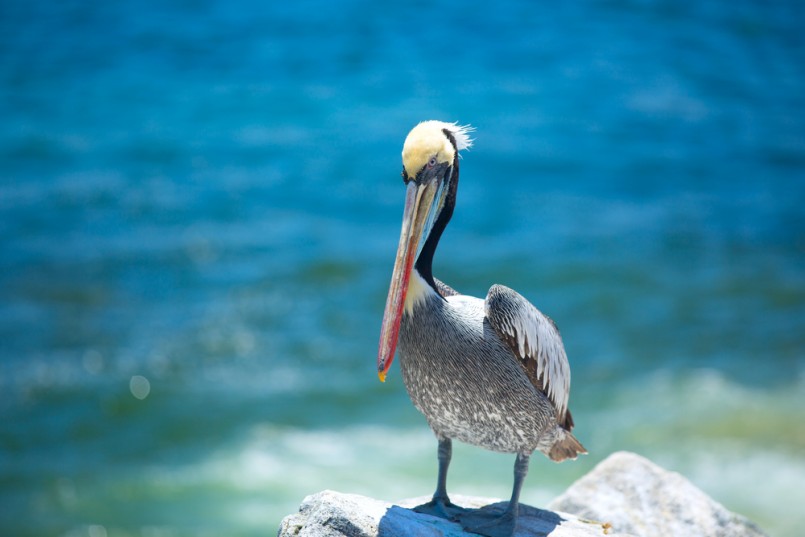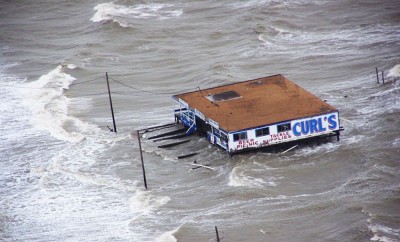Environment
How birdwatching is saving the ocean

Image: Shutterstock/Skreidzeleu
Birdwatching seems like a pretty innocuous hobby. Practiced stereotypically by cantankerous old men and house-dwelling biddies, actual birdwatching is more useful and exiting. Considering how it’s saving the ocean and all.
Birdwatching through Greenpeace seems like an adventure out of a Jules Verne novel. Workers peer out of comically huge binoculars supported by a beam with a crank. They watch from the highest platform on the Greenpeace ship Esperanza, dubbed “monkey island.”
These workers watch for birds to circle certain parts of the ocean. There’s a good chance the birds are looking for food above fishing aggregating devices, or FADs. These devices are just handmade rafts made to attract schools of tuna. But they also attract other marine wildlife like sharks. Whatever marine life is congregating gets scooped up, killed and thrown back overboard if it’s not needed.
This method of fishing is common for the world’s largest tuna company, Thai Union. So Greenpeace is scouring the Indian Ocean, watching for birds and pulling up the FADs they can find.
The menace of FADs
How FADs work is a simple concept. They’re simply buoys placed in the ocean and tethered to the ocean floor with concrete bricks, though some are allowed to drift around, and others remotely connect to satellites for locating. That’s literally about all you have to do, dump a floating object in the water, since fish like to congregate around these floating devices naturally. They mark them as locations for mating activities.
But just about everything in the sea loves them. More than 300 individual fish species gather around them. So when fishers are just trying to pull up one type of fish, like tuna, what they get is the whole dang ocean. There’s little way to differentiate, so what’s not needed is killed and tossed back overboard to save time. It’s highly unsustainable, to say the least.
And FADs are practically ubiquitous in the fishing industry. They’re used in the Pacific, Atlantic and Indian oceans, and they catch more than 1 million tons of tuna, about one third of all global counts of tuna. As of 2005, they caught 100,000 tons of by-catch (marine life that’s not needed to fishers).
Where fisheries used to target naturally swimming schools of tuna, they decided it was easier to let the fish come to them, and FADs have seen a huge increase of use in the last thirty years. The problem is, the average size of the tuna is smaller and these devices run the enormous risk of by-catch. They’ve also been linked to rising concerns of shrinking numbers of pelagic shark species. So overall, that’s less tuna and more waste.
Greenpeace’s efforts
Rather than just pulling FADs out of the ocean and trashing them completely, Greenpeace workers have a systematic attack. They use a combination of bird watching, and they have people in helicopters scouting for FADs and fishing boats. They also have a new method of searching using unmanned air vehicles to help scout.
Once they find a FAD, they skim the data off the beacon to find out who owns the buoy. Many times it’s fishing companies that supply Thai Union. Back on shore, Greenpeace workers put political and social pressure on these companies to stop these unsustainable fishing methods. If you’d like to support their efforts, you can sign a petition here.





0 comments